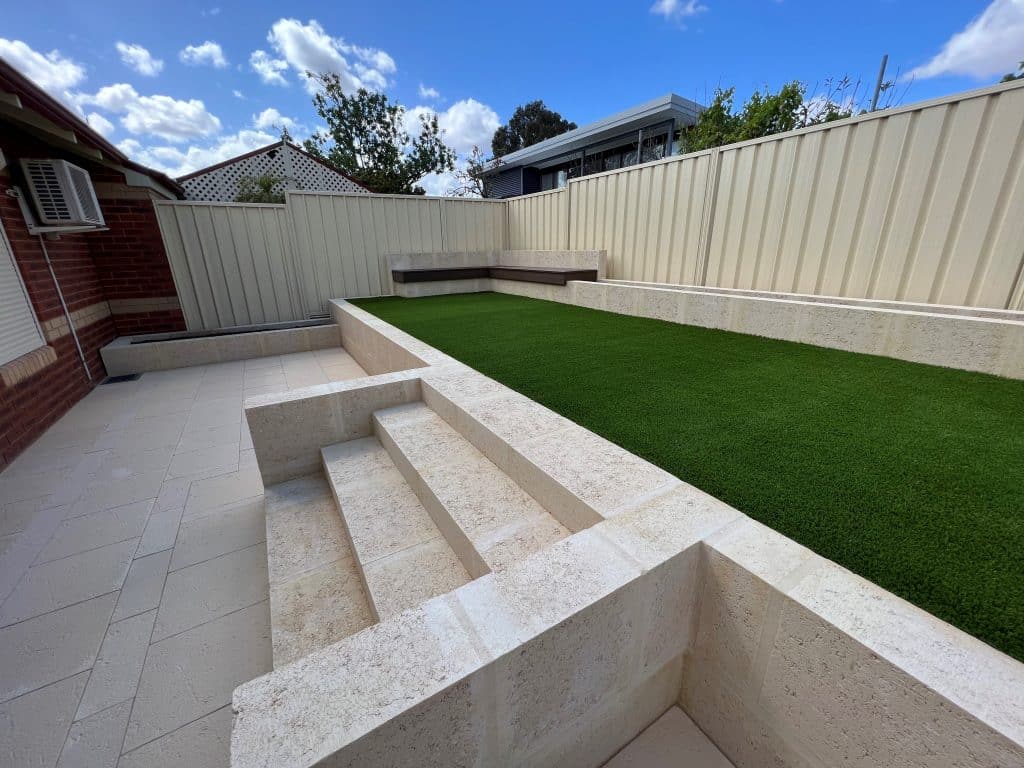Professional Tips for Setting Up Retaining Walls Sunshine Coast Successfully
Making Certain Architectural Integrity: The Value of Appropriately Created Preserving Wall Surfaces in Protecting Against Slope Failing
In the world of civil design and construction, the value of correctly constructed preserving wall surfaces in averting incline failure can not be underrated. By exploring the complex interaction between these components, a deeper understanding of the pivotal duty that retaining walls play in maintaining structural stability and preventing incline failing emerges.
Duty of Retaining Walls in Stability
The necessity of preserving walls in ensuring incline stability is vital in civil design practices. Maintaining wall surfaces serve a vital duty in avoiding dirt disintegration, managing water overflow, and keeping the structural stability of inclines. By sustaining vertical or near-vertical quality changes, keeping wall surfaces aid to redistribute lateral stress applied by the soil, thus lowering the risk of slope failure.
One trick feature of retaining walls is to combat the pressure of gravity acting upon the soil mass behind them. This is achieved with appropriate style and building and construction, which considers elements such as dirt kind, wall surface elevation, water drainage stipulations, and possible surcharge loads. By efficiently keeping soil within defined limits, these frameworks aid to maintain inclines and stop landslides.
Moreover, maintaining walls contribute to the aesthetics of landscapes while offering functional benefits. They can develop terraced degrees for landscaping, assistance highways or frameworks on hills, and improve the total usability of sloped terrain. Fundamentally, keeping walls play an important role in maintaining incline security and guaranteeing the safety and longevity of civil engineering tasks.
Aspects Influencing Wall Performance
Factors that influence the efficiency of preserving wall surfaces consist of dirt residential properties, wall style, and exterior lots. Correct wall surface layout takes into consideration elements like wall height, wall type (e.g., gravity wall surfaces, cantilever wall surfaces), reinforcement materials, drainage systems, and building techniques to guarantee the wall can stand up to the side stress put in by the kept soil. By considering these factors adequately, designers can build maintaining walls that effectively prevent slope failure and make certain lasting architectural integrity.
Style Factors To Consider for Keeping Walls
Incorporating the essential facets of soil buildings and exterior tons into the architectural style process is essential for developing efficient preserving wall surfaces that make sure incline stability. When creating keeping walls, designers should thoroughly evaluate the qualities of the surrounding soil, including its compaction, drainage, and type properties. Recognizing these soil properties is critical for identifying the ideal wall height, support, and thickness needed to hold up against the lateral pressure exerted by the dirt mass.
Moreover, outside lots such as surcharge loads from neighboring structures or web traffic, along with seismic forces, should be taken right into account during the style stage. These lots can considerably influence the security and performance of a keeping wall surface, demanding making use of appropriate style strategies and products to mitigate potential failure dangers.
In addition, the option of suitable materials, such as concrete, rock, or hardwood, should align with the aesthetic requirements and site-specific problems. Factor of security considerations, drain stipulations, this article and construction methods are likewise important elements that influence the general layout and functionality of keeping walls in preventing slope failure. By meticulously thinking about these style factors to consider, engineers can guarantee the structural stability and lasting security of preserving wall surfaces.

Construction Best Practices for Sturdiness
When creating maintaining wall surfaces for optimal longevity and durability, adherence to industry-standard strategies and precise focus to detail are critical. To ensure the toughness of a keeping wall surface, proper website prep work is necessary.
Incorporating reinforcement techniques, such as geogrids or steel bars, can enhance the architectural honesty of the preserving wall surface and protect against possible failings. By adhering to these building click over here now and construction finest methods, keeping walls can withstand the test of time and properly protect against incline failure.
Relevance of Correct Upkeep
Regular upkeep is crucial for protecting the architectural integrity and performance of retaining wall surfaces over time. To make certain that keeping wall surfaces continue to do their desired function successfully, regular inspections must be conducted to determine any kind of signs of wear and tear.

Final Thought
Finally, keeping wall surfaces play an essential function in making sure architectural stability and stopping incline failing. By taking into consideration variables affecting wall surface performance, sticking to make factors to consider, following construction ideal techniques, and applying correct upkeep, the resilience of retaining wall surfaces can be maximized. Retaining Walls Sunshine Coast. It is important to identify the value of appropriately built maintaining wall surfaces in preserving stability and protecting against possible risks associated with incline failing
Elements that influence the performance of maintaining walls consist of soil properties, wall surface style, and external lots. Appropriate wall surface style thinks about factors like wall surface height, wall surface type (e.g., gravity wall surfaces, cantilever walls), support materials, water drainage systems, and building techniques to make sure the wall can hold up against the lateral stress exerted by the preserved soil. By taking into consideration these elements comprehensively, engineers can create keeping walls that effectively avoid slope failing and make sure long-lasting architectural stability.
Upkeep tasks may consist of clearing water drainage systems to stop water build-up behind the wall, repairing any kind of visible fractures or damages, and ensuring that the wall surface is cost-free from greenery that might apply pressure on the structure. By taking into consideration variables influencing wall efficiency, sticking to design considerations, complying with building and construction finest practices, and applying proper maintenance, the durability of keeping walls can be made best use of.